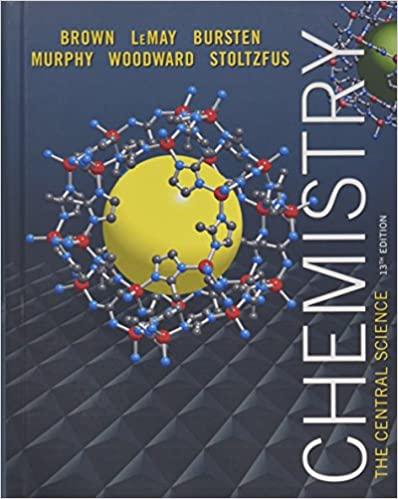Consider the hypothetical reaction A(g) + 2B(g) 2C(g), for which K c = 0.25 at a
Question:
Consider the hypothetical reaction A(g) + 2B(g) ⇌ 2C(g), for which Kc = 0.25 at a certain temperature. A 1.00-L reaction vessel is loaded with 1.00 mol of compound C, which is allowed to reach equilibrium. Let the variable x represent the number of mol/L of compound A present at equilibrium.
(a) In terms of x, what are the equilibrium concentrations of compounds B and C?
(b) What limits must be placed on the value of x so that all concentrations are positive?
(c) By putting the equilibrium concentrations (in terms of x) into the equilibrium constant expression, derive an equation that can be solved for x.
(d) The equation from part (c) is a cubic equation (one that has the form ax3 + bx2 + cx + d = 0). In general, cubic equations cannot be solved in closed form. However, you can estimate the solution by plotting the cubic equation in the allowed range of x that you specified in part (b). The point at which the cubic equation crosses the x-axis is the solution.
(e) From the plot in part (d), estimate the equilibrium concentrations of A, B, and C.
Step by Step Answer:

Chemistry The Central Science
ISBN: 9780321910417
13th Edition
Authors: Theodore E. Brown, H. Eugene LeMay, Bruce E. Bursten, Catherine Murphy, Patrick Woodward, Matthew E. Stoltzfus





